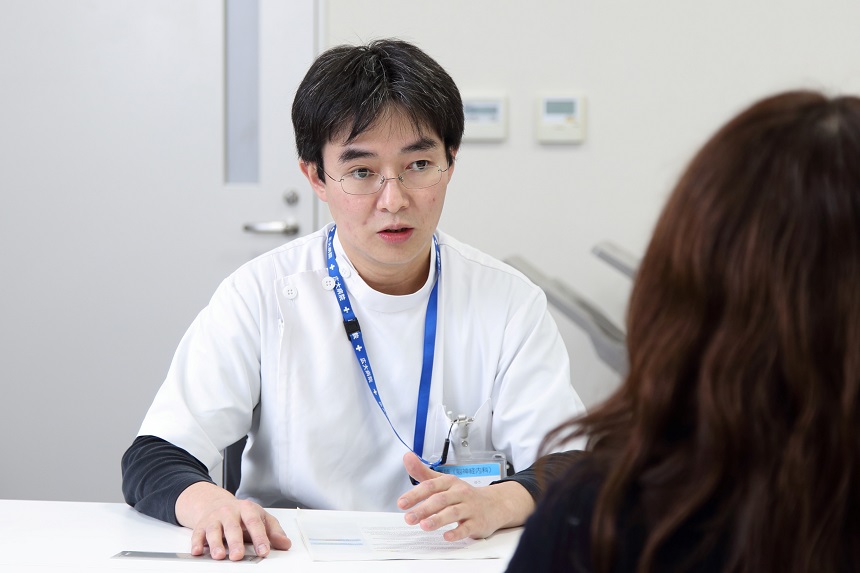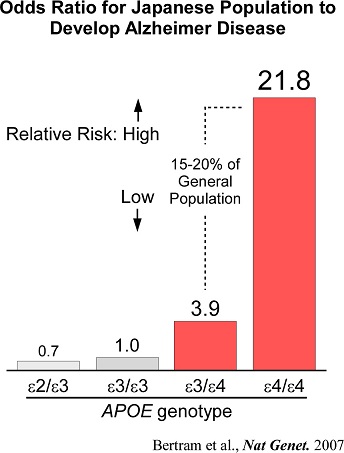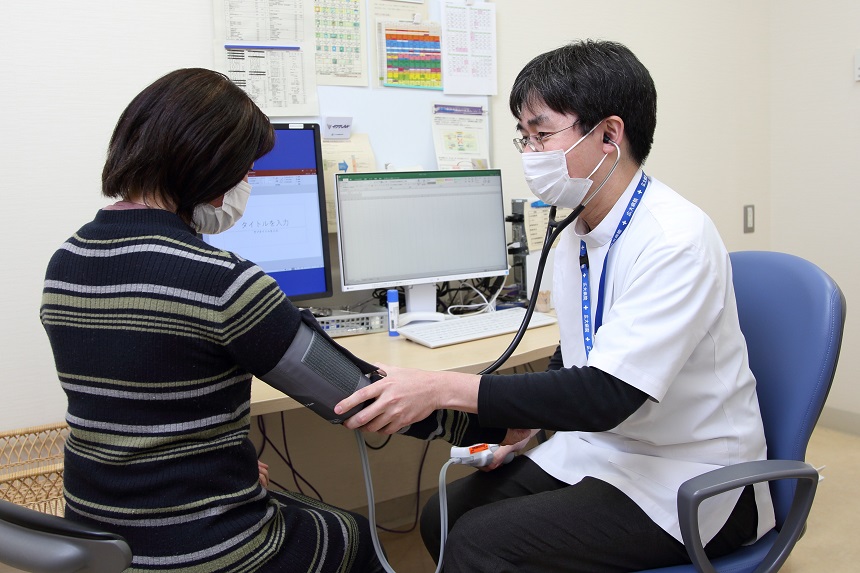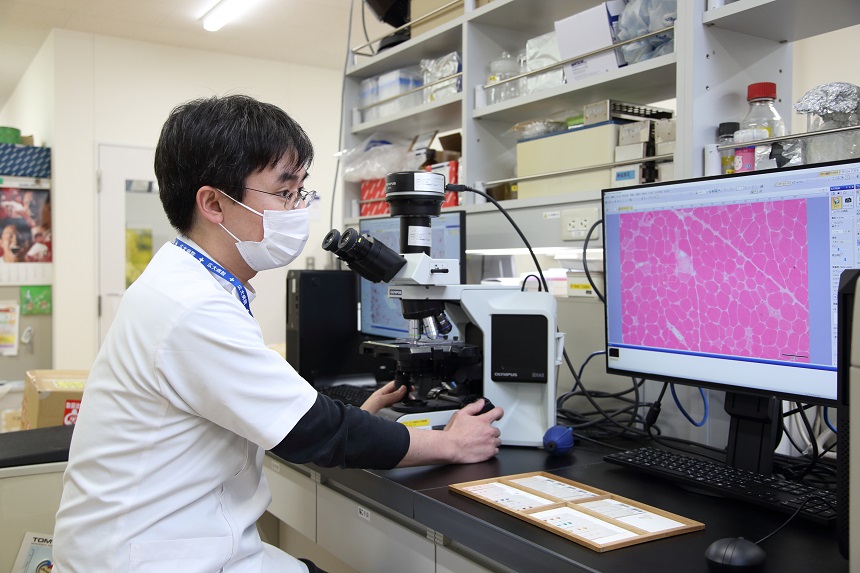On February 1, 2013, Hiroshima University established two new programs: the “Distinguished Professors” (DP) program and the “Distinguished Researchers” (DR) program. Individuals who are part of these programs are recognized as senior and junior faculty members respectively, who are engaged in extraordinarily distinguished research activities.
A Conversation with Distinguished Researcher Yu Yamazaki

Please tell us about your field of specialty.
As member of a team of physician-scientists in the Department of Clinical Neuroscience and Therapeutics, I specialize on the neurobiological mechanisms of Alzheimer’s disease (AD) and therapeutic approaches meant to cure it and similar types of dementia.
Why is studying AD so important to you and your group?
AD is by far the most common form of dementia among elderly individuals, typically causing a progressive deterioration in memory, thinking, and behavioral skills. AD physically and emotionally affects not just the patients, but also their families and caregivers. In Japan alone, over two million people aged 65 and older have AD, and its total economic burden in 2018 was recently estimated to be 1,073 billion JPY (about 9 million USD). Despite all this, there are still no treatment strategies that can cure AD or delay its progression.
What motivated you to focus on this topic within the vast field of neurobiology?
The central nervous system is quite interesting in itself, but the neurobiology of diseases is an area of research that strongly fascinates me. Moreover, I cannot think of a better way to live than to contribute to the health of others. So, I have been rigorously pursuing a career as a clinician, investing much time and professional effort in biomedical research.
What questions are you and your group currently trying to answer?
There are three major questions that guide our current research.
The first one is how 'environmental factors,' like smoking and poor oral hygiene, can influence the development of AD (in other words, its pathogenesis).
The second one concerns the roles that cells of the brain other than neurons, such as astrocytes and perivascular cells, play in the development of AD and cerebrovascular homeostasis—that is, how these cells help regulate the physical and chemical conditions of the blood vessels in the brain.
The third is about new ways in which modern gene-editing techniques could help us develop therapeutic strategies to treat AD.
To answer these questions, we are using cutting-edge molecular, cellular, and animal-modelling techniques.

APOE4 is one of the strongest genetic risk determinants for late-onset Alzheimer disease and gives rise to apolipoprotein E4 (apoE4), distributed primarily in the brain, liver, and blood. "If we could better understand how apoE4 drives the pathogenesis of AD, we might be able to find novel therapeutic strategies," says Dr. Yamazaki.
You implied that cerebrovascular homeostasis is important in relation to AD. How do you know this is the case?
I was fortunate to receive training as a postdoc in Dr. Guojun Bu’s lab at Mayo Clinic for more than seven years. The findings of my project there strongly suggest that brain vasculature is closely related to AD pathogenesis. This led to one of our current projects, which focuses on the role of vascular and glial cells in maintaining brain homeostasis.
How do you think your work will impact society? What are your ultimate goals?
The overarching goal of our research is to find a therapeutic strategy that can cure AD. I am also responsible for passing on knowledge, skills, and research ethics to young students. I believe fostering the next generation of physician-scientists is vital to ensure that talented researchers can continue to join the AD research community, with the hope of one day ridding the world of this disease.
What do you think are the main challenges to be addressed in your field?
The development of drugs and therapeutic approaches relies heavily on using cellular and animal models before doing going into clinical trials. However, there are still important gaps in neurobiology that prevent us from translating research results into clinical disorders. We need to urgently find ways to improve our preclinical models for neurological diseases. Our group believes that gene-editing and phenotyping technologies will be integral to tackle this problem.

What projects are you currently working on?
One of our ongoing projects involves developing a 'humanized' animal model of AD, which would allow us to study the underlying mechanisms of the disease more easily. We are also excited about the coming launch of the ‘HUSA’ project, in which we will collect data related to brain health from healthy individuals living in Hiroshima, Japan.

What things about your research are you proud of?
Since joining Hiroshima University as an Assistant Professor in 2019, I have been privileged to work daily with tremendous colleagues and graduate students (such as Drs. Yoshiko Takebayashi and Hidetada Yamada). While a cure for AD is far, I have been contributing to the field by publishing high-impact papers in journals including Neuron, Brain, and Nature Communications.
What advice do you have for today's students?
My hope for all my students is that they will be dedicated healthcare professionals and at the same time be "professionals of knowledge" with broad perspectives. For the latter part, it is important to do your best to tackle the research problem at hand; however, it is equally important to have a broader perspective that transcends the boundaries of academic disciplines to further improve our society. To this end, I have three suggestions for students:
First, read books and newspapers carefully. Even if you do not get the opportunity to travel abroad, learn about different countries, societies, people, customs, and ways of life. This will give you the opportunity to refine the issue from a global perspective. Second, work hard in English even though you are not good at it or dislike it. When you make English your own, you would have access to the information you need more easily. Third, make friends outside of your small community through club activities, volunteering, and lessons, and cherish those encounters. Experiences with seniors, juniors, and friends from various backgrounds will help you to sharpen your sensitivity to what is happening around you, thereby broadening your perspective.
When you are not working, how do you spend your time?
Outside the lab, I enjoy happy hours and playing with my kids. They love to play baseball and soccer and go hiking all around Hiroshima. I also collaborate with my wife to keep them clean, warm, fed, and clothed!

 Home
Home